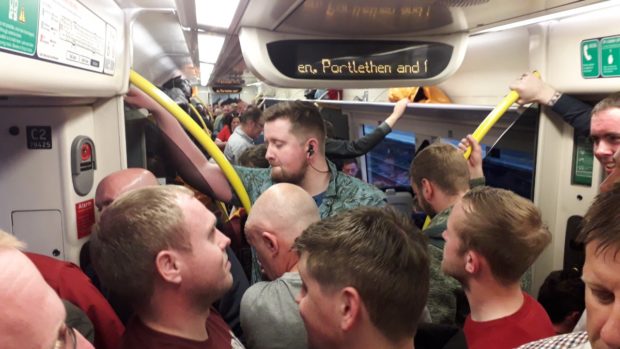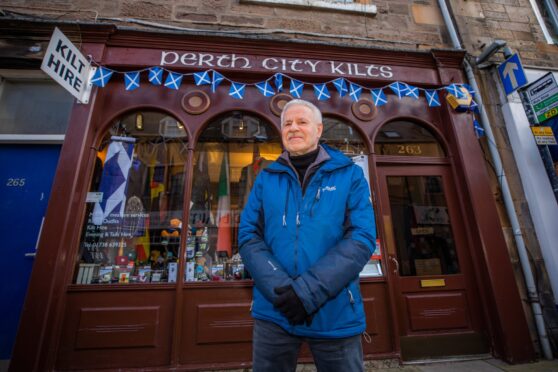The head of resilience for the UK is to take her fears over rail passenger safety to the Scottish Government.
Jacqui Semple, head of the Emergency Planning Society, raised concerns about overcrowding on the north-east railway line and at Edinburgh Waverley and Haymarket stations in July when passengers were “herded like cattle” on trains.
She contacted the Office of Rail and Road (ORR), ScotRail and London North Eastern Railway (LNER) to call for a review of the system but is now urging transport secretary Michael Mathieson to find a solution, claiming the whole system needs “a complete overhaul”.
Mrs Semple, 52, who also manages risk, resilience and safety for Angus Council, said she received an apology from LNER and ScotRail but no pledges for action.
She said: “It is shambolic, there is no joined up approach whatsoever.
“Everyone expects trains to be busy when big events are on, but not to the point where they feel completely unsafe.
“It is happening time and time again, they can’t continually ignore this, the system needs sorted.”
She likened the crowds at Edinburgh Haymarket on August 24 after an international rugby match and the Edinburgh Fringe to “scenes from a third world country.”
“Our current system is in crisis and chaotic,” she said.
A ScotRail spokesperson said: “We’re conducting an incident learning review following disruption in Edinburgh at the end of August to see how we can better manage large scale events.”
Passengers reported “riot like” conditions last month when festival goers left Edinburgh and rugby fans vacated Murrayfield following Scotland’s 17-14 win over France.
It is understood more seats than ever had been put on by the country’s rail operator over the course of this year’s festival, but the demand had exceeded all estimates on the final weekend.
Customers who had bought tickets for train services were forced to turn back.
ScotRail themselves resorted to advising travellers to try to reach alternate transport while the chaos unfolded.
A spokesman for the Office of Rail and Road said: “ORR considers the risks associated with Britain’s ‘turn up and go’ railway are manageable with the right processes, equipment and well trained staff in place.
“It appears the plan in place on this occasion failed to recognise and respond quickly enough to the number of potential travellers.
“A joint review is currently being conducted by ScotRail, Network Rail and BTP to consider what went wrong and to mitigate any future issues.
“ORR will take interest in the planned outcomes from that review.”
A Transport Scotland spokesperson said the overcrowding levels on August 24 was being taken very seriously.
“We have been quite clear in conversation with ScotRail’s senior management team, these incidents have been unacceptable.
“The factors of crowd management and staffing issues form a key part of the ScotRail Alliance wholesale review currently underway.
“Initial findings are expected to be shared with Transport Scotland in the coming weeks.
“A wider investigation needs to take place to look at resilience planning to ensure not only transport but destinations as a whole are able to cope with multiple events at the same time.”










